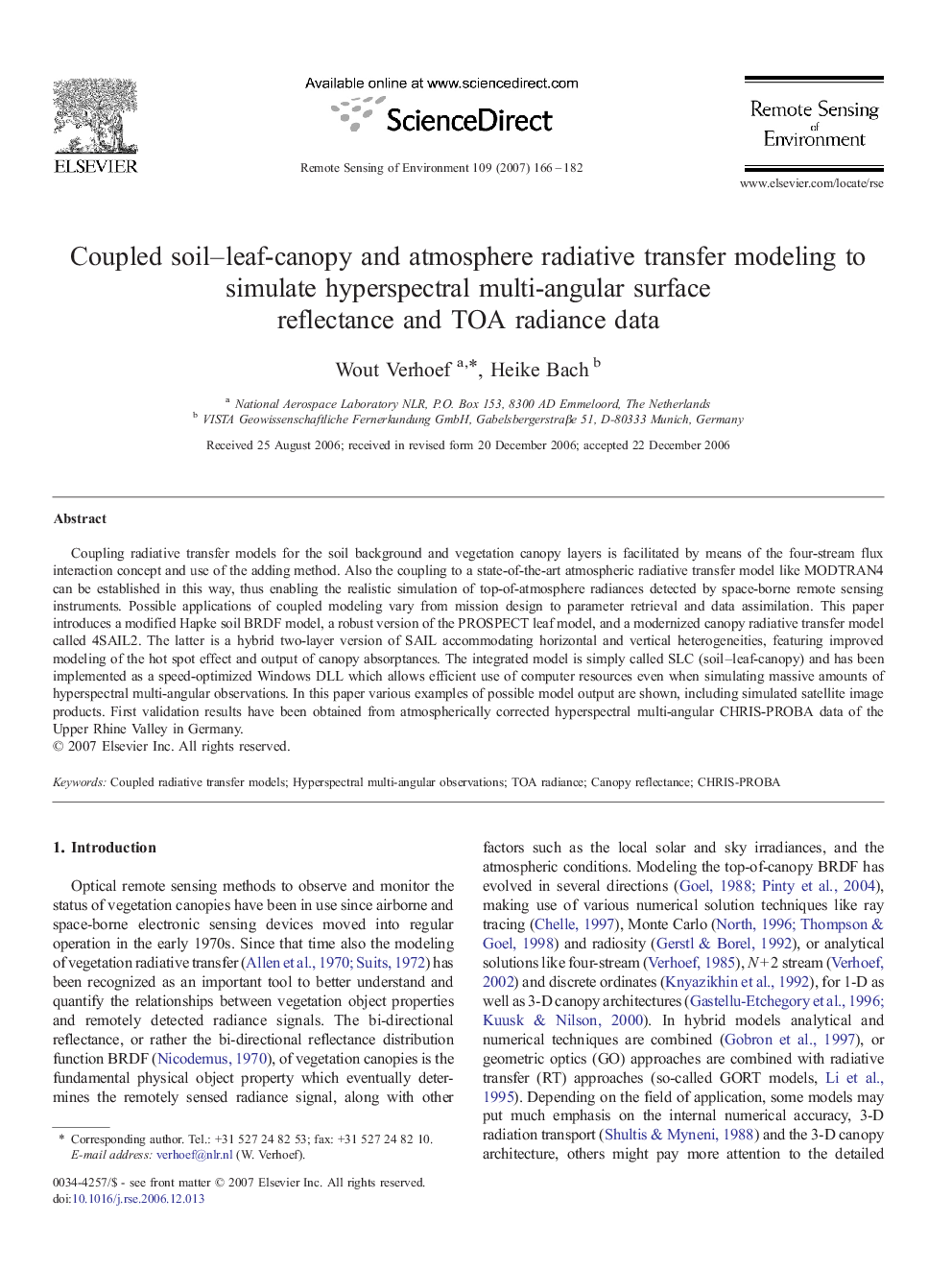| Article ID | Journal | Published Year | Pages | File Type |
|---|---|---|---|---|
| 4460737 | Remote Sensing of Environment | 2007 | 17 Pages |
Coupling radiative transfer models for the soil background and vegetation canopy layers is facilitated by means of the four-stream flux interaction concept and use of the adding method. Also the coupling to a state-of-the-art atmospheric radiative transfer model like MODTRAN4 can be established in this way, thus enabling the realistic simulation of top-of-atmosphere radiances detected by space-borne remote sensing instruments. Possible applications of coupled modeling vary from mission design to parameter retrieval and data assimilation. This paper introduces a modified Hapke soil BRDF model, a robust version of the PROSPECT leaf model, and a modernized canopy radiative transfer model called 4SAIL2. The latter is a hybrid two-layer version of SAIL accommodating horizontal and vertical heterogeneities, featuring improved modeling of the hot spot effect and output of canopy absorptances. The integrated model is simply called SLC (soil–leaf-canopy) and has been implemented as a speed-optimized Windows DLL which allows efficient use of computer resources even when simulating massive amounts of hyperspectral multi-angular observations. In this paper various examples of possible model output are shown, including simulated satellite image products. First validation results have been obtained from atmospherically corrected hyperspectral multi-angular CHRIS-PROBA data of the Upper Rhine Valley in Germany.
